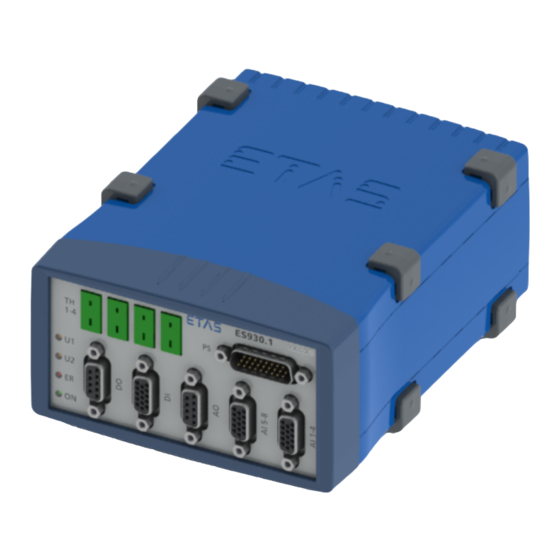
ETAS ES930.1 Manuals
Manuals and User Guides for ETAS ES930.1. We have 1 ETAS ES930.1 manual available for free PDF download: User Manual
ETAS ES930.1 User Manual (139 pages)
Multi-I/O Module
Brand: ETAS
|
Category: I/O Systems
|
Size: 7 MB
Table of Contents
Advertisement
Advertisement
